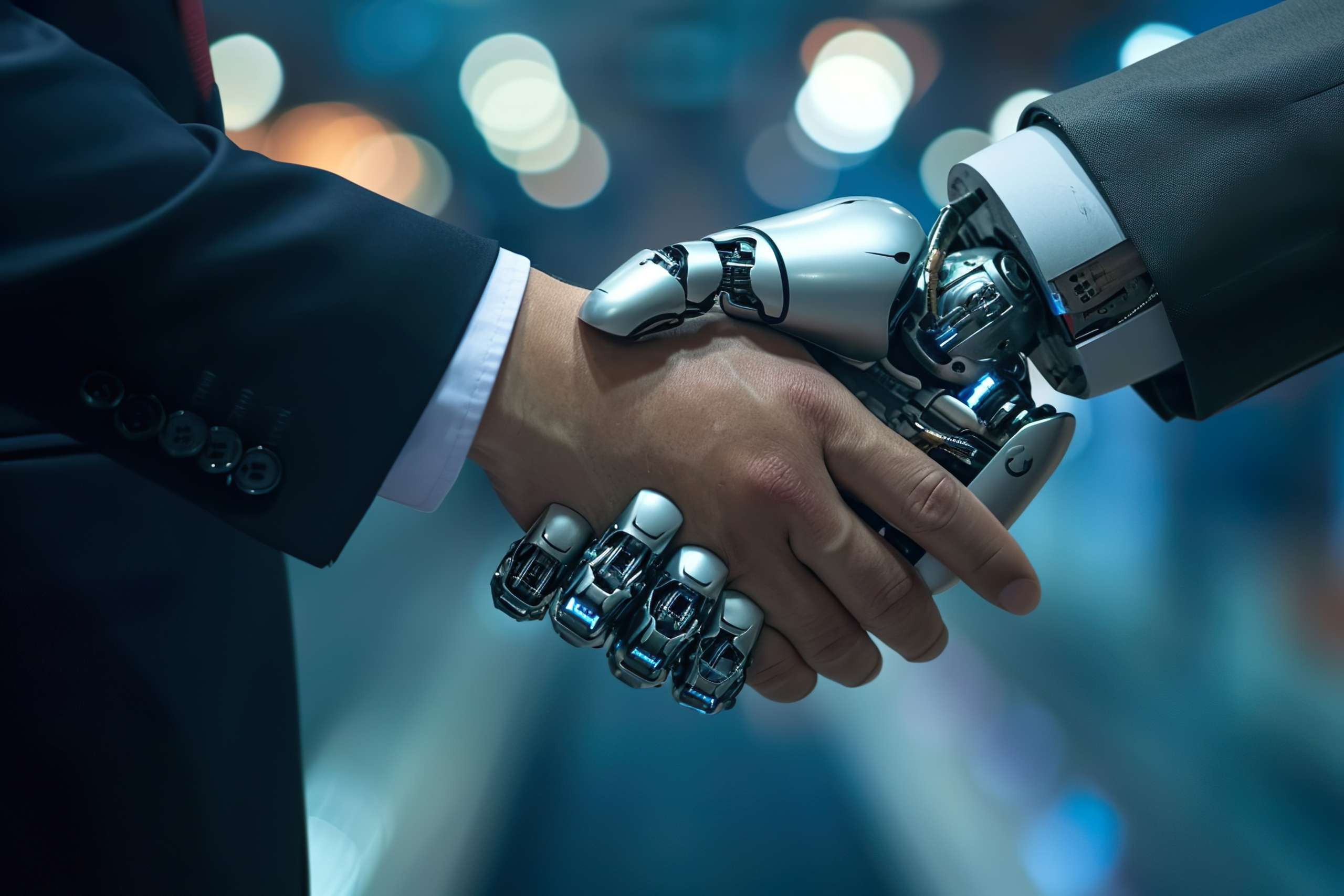Robots on the Sales Floor: Can AI Outsell the Human Touch?
We are quickly entering a new age of technology with AI becoming more prevalent in our everyday lives. From generative AI tools like ChatGPT in the workplace to predictive AI in refrigerators (yes, really), it seems that AI will be increasingly involved in our day-to-day.
With the expanding presence of AI tools in our work and personal lives, I’m seeing a lot of fear around AI technology. Some people are worried that it will take away human jobs, while others are worried that it will take over the world. I’ve seen people imagine the worst outcome for AI as something like HAL 9000 from 2001: A Space Odyssey, or Skynet from the Terminator series – inhuman, uncaring, sinister. Looking at my own experience with these tools, I don’t believe this view is entirely warranted.
When I imagine the future of AI, I can’t help but think of J.A.R.V.I.S., Tony Stark’s faithful AI companion in the Marvel superhero universe. J.A.R.V.I.S. is the ultimate helper. It does everything, from cleaning Stark’s house and keeping his schedule to analyzing combat situations, and on multiple occasions, helping to keep him alive. But if you’ve ever watched an Iron Man or Avengers movie, you know that J.A.R.V.I.S. isn’t what makes Tony Stark, Iron Man, a superhero.
At the end of the day, it’s Tony who puts on the suit, who makes the decisions, and who saves the day. It’s his very human need to help others that allows him to stand for what he believes is right and put himself in harm’s way time and again. And when he does, J.A.R.V.I.S. is there to help him fight off the villains, keep people safe, and make a difference.
While your average Sales Development Representative (SDR) or Account Executive (AE) is not fending off giant monsters or alien invasions, they still have a lot to gain from the AI technology we have available today. Tools like AI-enabled Customer Relationship Management (CRM) software can reduce basic administrative tasks, while also providing richer data and better customer insights. Other AI tools can transcribe and analyze calls with customers, considering factors such as tone of voice, sentiment, and language used to help improve sales efficacy. However, much like J.A.R.V.I.S., these tools need human input to be truly effective.
In the sales world, AI is here to help humans make better decisions and better connections with other humans. It’s not yet able to replace the human-to-human connections that businesses depend on.
How People and AI Work Together
As a global company, we have agents who speak a variety of languages to better support our clients and connect with prospects. However, our agents don’t all speak every language that we support.
As part of our quality control process, we analyze calls and share insights gained from them with our teams, including those in other countries. If we have a great call with a business in Germany, our U.K. team will want to share that with the team in the U.S. This is where AI comes in.
The AI tools we use transcribe, translate, and analyze the call, creating an English language (or any language) transcript and extracting relevant data points that can be understood by anyone on our global team. As a result, we have better insight into what is working with different kinds of companies across various regions. AI is helping us learn from one another quickly and more efficiently, allowing us to make improvements that will be impactful to the business.
There’s No Replacing the Human Touch
For some purchases, human connections are not necessary. There are many companies, especially software companies, who prefer to let their products speak for themselves. However, many of those companies still have sales teams, because there will always be clients who need human input to truly understand if a product is a good fit, and to help make a purchasing decision.
I have the privilege of working with a talented global sales team, led by our outstanding Vice President and Head of Global Sales, Alicia Rasta. To me, Alicia embodies the vital human element needed to build relationships and make a sale. She actively listens, asks relevant, empathetic questions, analyzes the information she is given, and can then almost immediately identify a solution that will meet a prospective client’s needs.
However, the thing she is best at is communicating the “why.” She can always craft a story that explains how the solution addresses the challenge, the results customers can expect, and how the solution will impact their business.
I believe AI can be a great tool to help make a purchasing decision. It can help you with research and even make recommendations. AI can tell you what a solution does, how much it costs, and how it stacks up against competing solutions. Yet, AI can’t empathize with you or truly understand the unique challenges you are facing. It can’t truly communicate how it will impact your workflow or make things easier for your team. At the end of the day, sales are made when relationships are built. because people buy from people.
Looking Forward
As we look ahead, the role of AI in our sales processes is undeniably growing, but it can’t replicate the genuine connections we forge with our clients. The crux of sales, that real human interaction, is something AI is still light years away from mastering.
Think of AI as the ultimate sidekick in our sales adventures. It’s there to handle the grunt work—crunching numbers, scheduling meetings, even sifting through data to find those golden insights. This frees us up to dive into what truly matters: understanding our clients, empathizing with their challenges, and crafting solutions that make a difference.
I’ve always believed that sales is as much about relationships as it is about products or services. It’s about listening, really listening, to what the person on the other side of the conversation is saying. It’s about feeling their excitement or their concerns as if they were your own. That’s something no AI can do.
We’ve seen how AI can be a game-changer, making our jobs easier and our strategies sharper. But at the end of the day, it’s the human element—our intuition, our empathy, and our ability to connect on a personal level—that seals the deal.
Let’s not lose sight of the human touch that defines us. Let’s use AI to enhance our work, not overshadow the personal connections that are the heart and soul of sales. After all, it’s those genuine, human moments that transform a good salesperson into a great one.


